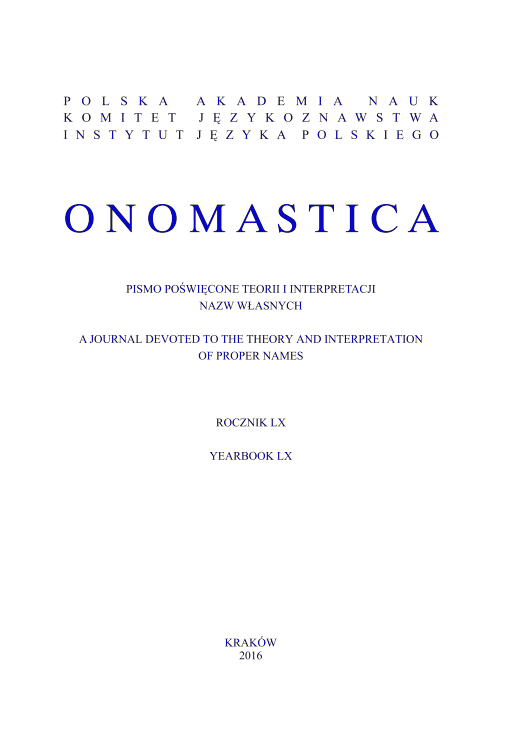Abstract
commemorative roles in the past. The city names are presented in chronological order starting from ancient times to the 20th century. The ancient toponyms are related to the expansion of the Roman Empire, and the names of Roman emperors are used as a foundation for these toponyms. Such urbonyms created on the outskirts of the Roman Empire made reference to their new political allegiance and confirmed it. These naming practices therefore played an important role in the process of territorial expansion and the consolidation of political control. This naming model was also present in Byzantium, and became popular on the outskirts of medieval Ruthenia under the influence of the Byzantine Empire. The tradition of commemorating political rulers through toponyms stayed constant in the Eastern Slavic regions, and was continued by the Russian monarchy as well as the USSR. Such naming practices were initially used as a tool for the structural organisation of Kievan Rus’, and later to erase foreign names from these regions of Tsarist Russia. In Communist times, this tradition reaffirmed the new political reality through the use of surnames of political figures in toponyms. In the 20th century there was an increase in surnames featured in urbanonyms (the names of streets, squares, housing estates). This increase was meant to preserve the memory of remarkable individuals in society.References
Chmielewski, S. (1965). Jarosław Mądry. W: W. Kowalenko i in. (red.), Słownik starożytności słowiańskich. Encyklopedyczny zarys kultury Słowian od czasów najdawniejszych. T. 2, cz. 2. Wrocław: Zakład Narodowy im. Ossolińskich, s. 321–322.
Handke, K. (1970). Semantyczne i strukturalne typy nazw ulic Warszawy. Wrocław: Zakład Narodowy im. Ossolińskich.
Kijas, A. (1980). Wsiewołod Cyryl. W: G. Labuda, Z. Stieber (red.), Słownik starożytności słowiańskich. Encyklopedyczny zarys kultury Słowian od czasów najdawniejszych. T. 6, cz. 2. Wrocław: Zakład Narodowy im. Ossolińskich, s. 625–626.
Kowiańska-Piaszykowa, M., Wędzki, A. (1965). W: Kowalenko i in. (red.), Słownik starożytności słowiańskich. Encyklopedyczny zarys kultury Słowian od czasów najdawniejszych. T. 2, cz. 2. Wrocław: Zakład Narodowy im. Ossolińskich, s. 324.
Poppe, A. (1970). Perejasław ruski. W: G. Labuda, Z. Stieber (red.), Słownik starożytności słowiańskich. Encyklopedyczny zarys kultury Słowian od czasów najdawniejszych. T. 4, cz. 1. Wrocław: Zakład Narodowy im. Ossolińskich, s. 55–58.
Szymański, W. (1980). Wsiewołoż. W: G. Labuda, Z. Stieber (red.), Słownik starożytności słowiańskich. Encyklopedyczny zarys kultury Słowian od czasów najdawniejszych. T. 6, cz. 2. Wrocław: Zakład Narodowy im. Ossolińskich, s. 626–627.
Wędzki, A. (1980). Włodzimierz Wołyński. W: G. Labuda, Z. Stieber (red.), Słownik starożytności słowiańskich. Encyklopedyczny zarys kultury Słowian od czasów najdawniejszych. T. 6, cz. 2. Wrocław: Zakład Narodowy im. Ossolińskich, s. 537–538.
Zierhofferowa, Z., Zierhoffer, K. (2014). Wielka rewolucja francuska oraz rewolucja październikowa. W: A. Gałkowski, R. Gliwa (red.), Mikrotoponimia, makrotoponimia. Problematyka wstępna. Łódź: Wyd. UŁ, s. 235–243.
Zierhofferowie, K. i Z. (2011). Nazwy geograficzne Europy w języku polskim. Dziedzictwo i współczesność. Poznań: Wyd. Naukowe UAM.

